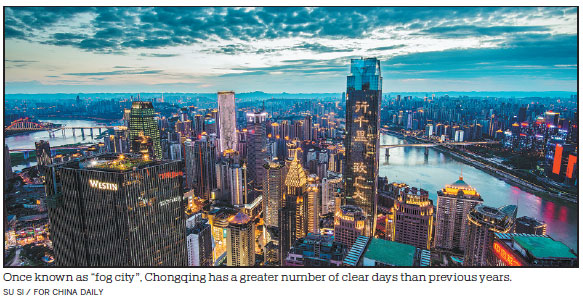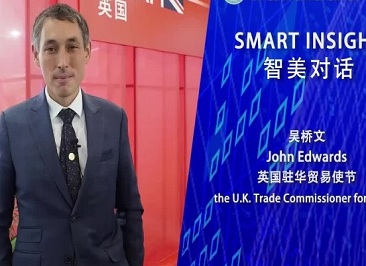City clears the way for a green future
Tan Yingzi in Chongqing
Updated:2019-07-31
China Daily
Chongqing was known as "fog city" in the 1980s and '90s when it suffered through more than 100 days of heavy air pollution every year.
But the municipality's 30 million residents are now enjoying a greater number of clear days due to government efforts in recent years to improve environmental protection. Last year, the air quality index showed 316 days of the year were either "good" or "moderate".
During his inspection tour of Chongqing in 2016, President Xi Jinping urged the municipality to become a pleasant place with clear water and green mountains.
The quality of water running through Chongqing is not only important to the city itself, but also many other parts of the country.
The Yangtze, the world's third-longest river, flows 6,300 kilometers from the glaciers of the Qinghai-Tibet Plateau eastward through Chongqing, Wuhan and Nanjing before reaching the East China Sea at Shanghai.
More than 400 million people get their drinking water from the river, and water security has become a major issue in China's development.
With 691 km of the Yangtze River running through the municipality, Chongqing has made environmental protection a priority, concentrating on ecological restoration and protection and avoiding large-scale development.
Chongqing has built an "ecological red line" around 2.04 million hectares of land to strengthen environmental protection. The red zones, approved early last year by China's cabinet for 15 provincial-level regions, can be developed as long as environmental functions are not harmed.
The zones cover nature reserves, scenic areas, forest parks, geological parks and wetlands.
In order to reduce water pollution and soil erosion on the upper reaches of the Yangtze, Chongqing is also looking at ways to solve drainage problems.
Yuelai New City in the Liangjiang New Area development zone is one of 16"sponge cities" taking part in a program testing climate-resilient urban designs.
To prevent flooding, sponge cities store rainwater and release it during times of drought or for irrigation and cleaning.
Clean water initiatives are already showing results. Last year, all 64 major water sources in Chongqing's urban areas met the national standard required for drinking water.
The local government has opted for green development in recent years and rejected more than 780 projects due to harmful environment impacts. Forty-eight percent of Chongqing municipality is now covered with trees, compared with only 32 percent in 2005.
The development zone once rejected a 3 billion yuan ($434.8 million) project because it failed the environment impact evaluation. It decided the glass-material production project would emit dangerous gases such as sulfur dioxide and nitrogen oxygen, which could not be treated.
As the pioneer and model of Chongqing's sustainable development, the new area has strictly followed the green path. Last year, it halted 20 projects due to environmental concerns.
"Developing an ecological civilization is one of the major tasks of the new area," said Duan Chenggang, director of the new area's administrative committee.
"We must make environment protection the top priority of our work and unswervingly adhere to the protection plan."

Video

John Edwards, the UK trade commissioner for China, praised Chongqing over its rise as a burgeoning center in intelligent manufacturing.





